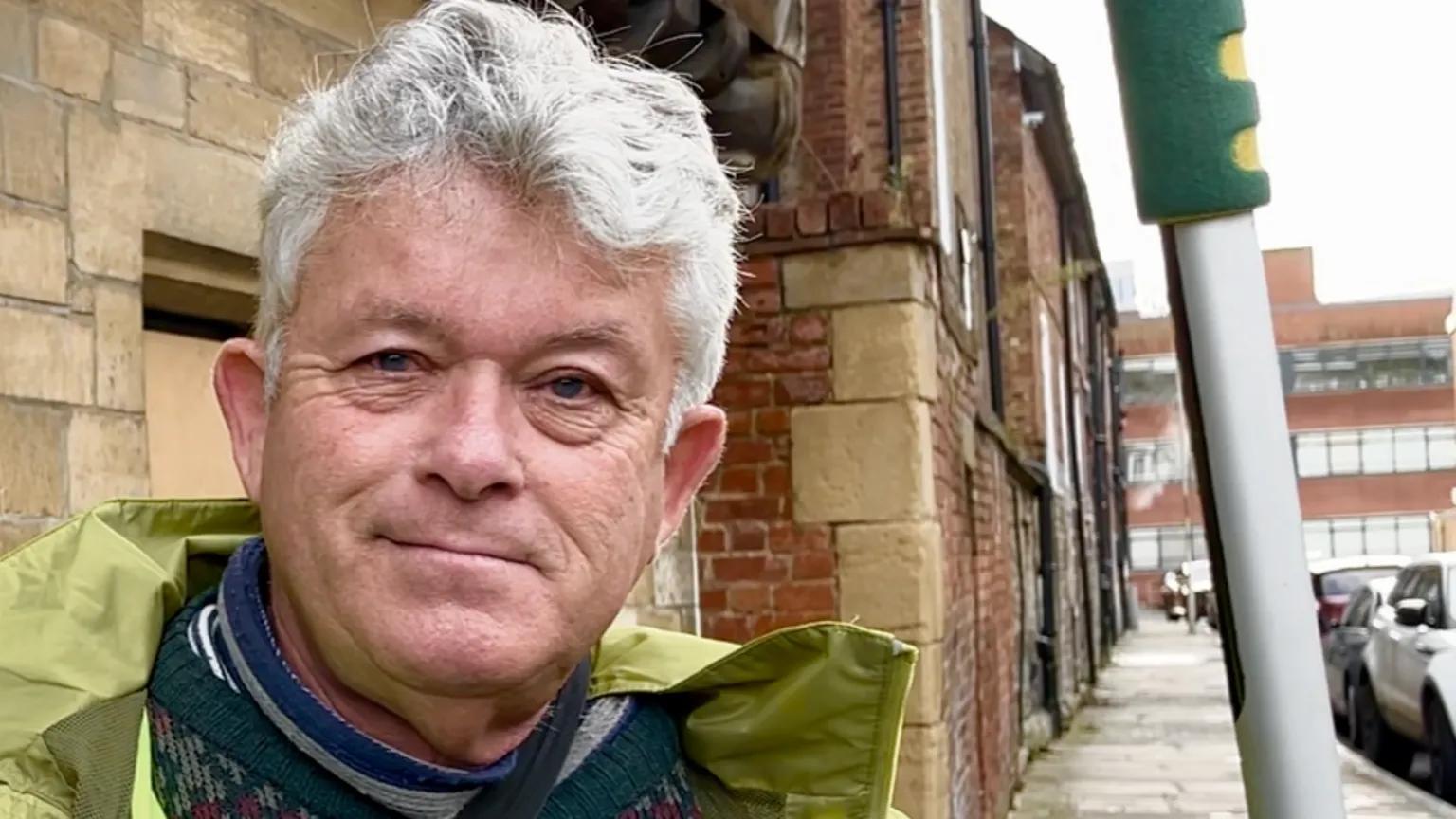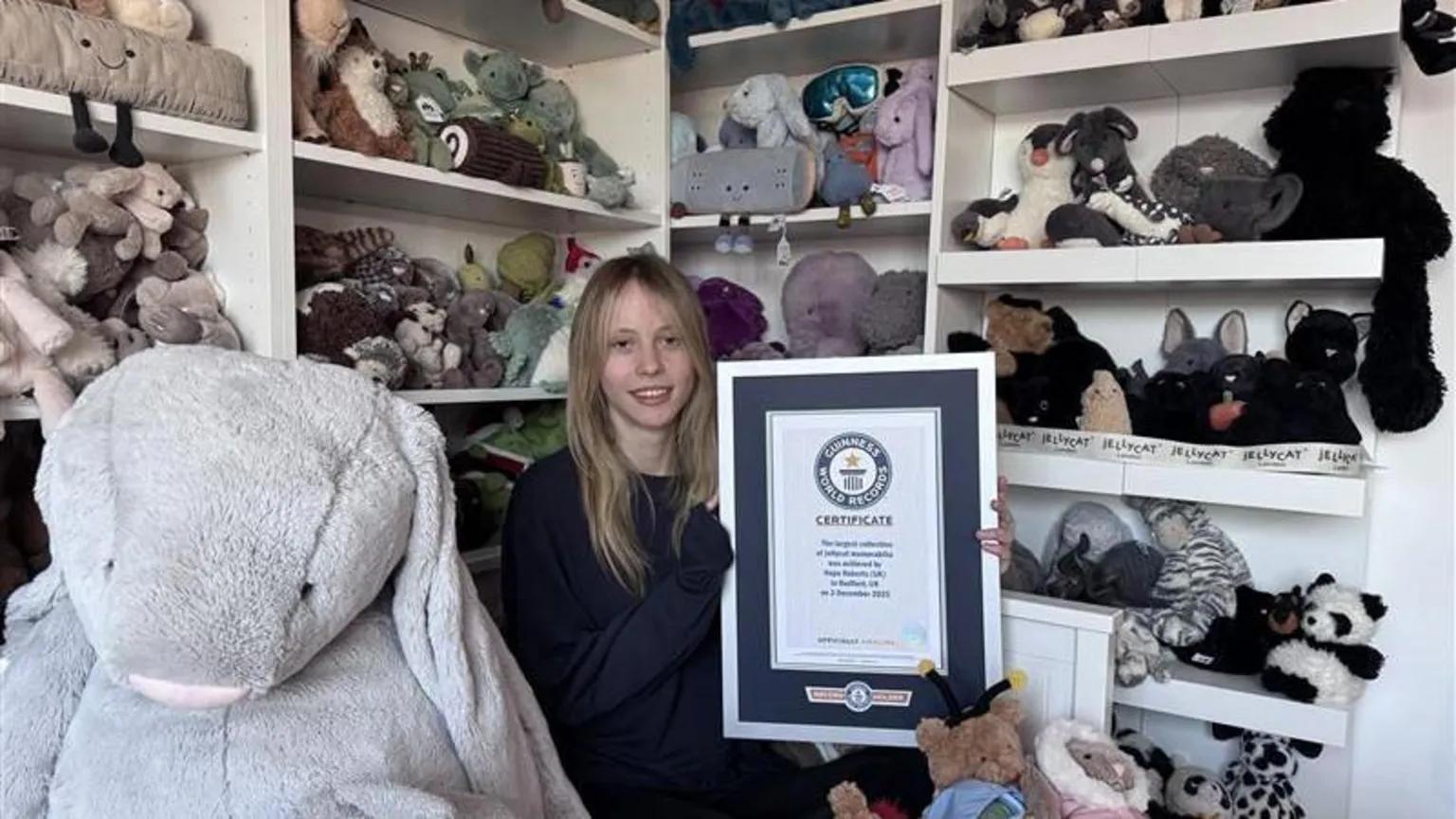Scroll For More

Score (84)
Yemeni Heroes Save Hundreds Of Sheep From a Capsized Ship In The Red Sea
A dramatic rescue unfolded off the coast of Ras Al-Ara in Yemen's Lahj province as locals sprang into action to save hundreds of sheep from the Red Sea. A commercial ship, en route to Djibouti, ran aground and capsized, leading to a frantic effort by Yemenis to rescue the animals. Video footage captured the scene as rescuers worked tirelessly to pull sheep from the water. The incident highlights both the challenges faced by maritime transport in the region and the community's determination to respond swiftly in times of crisis. The vessel's grounding has raised concerns about shipping safety and animal welfare during transport. Local residents expressed their commitment to saving as many animals as possible. "We did everything we could," one rescuer said. "We couldn't stand by and do nothing." While this event underscores ongoing issues with maritime safety, it also showcases a community united in compassion and quick action.

Score (98)
Florida Zoo Just Set a New Record With 26 Manatees Released Into the Wild in a Single Year
ZooTampa at Lowry Park has hit a major conservation milestone — and it comes with flippers and whiskers. In 2025, the Florida zoo released 26 rehabilitated manatees back into local waters, marking the highest number of manatee releases in a single year in the zoo’s history. The announcement was made in a press release on January 5. “This accomplishment underscores the Zoo's pivotal role in conserving this iconic species and its role within the Manatee Rescue & Rehabilitation Partnership,” the zoo said. The releases included manatees like Finn and Mudonna, both of whom were featured in recent photos and videos shared by the zoo alongside Florida Fish and Wildlife Conservation Commission (FWC) teams. Mudonna's story is especially striking. She was rescued in November 2024 after Hurricanes Helene and Milton swept through Florida. Found in just five inches of cold water with little food and temperatures near freezing, she weighed only 345 pounds — dangerously low for an adult manatee, which typically weighs around 1,000 pounds. ZooTampa, along with the FWC and the University of Florida Marine Rescue, spent months nursing her back to health. By the time she returned to Crystal River last week, Mudonna had more than doubled her weight, tipping the scales at over 700 pounds. The zoo’s David A. Straz, Jr. Manatee Critical Care Center is the largest nonprofit facility of its kind in the United States and has cared for more than 615 manatees since it opened in 1991. Most have been successfully returned to the wild. According to ZooTampa, its rescue program operates 24/7, staffed by veterinarians — including two certified manatee critical-care specialists — and trained animal care teams. The zoo also plans to expand its efforts this spring with the opening of the Straz Family Manatee Rescue, which will give visitors an up-close, underwater view of manatees in care. Manatees in Florida continue to face serious threats, including habitat loss and injuries from watercraft. In 2025 alone, an estimated 620 manatees died and 97 were hurt in boat strikes, according to the FWC. Manatees are protected under multiple laws, including the Marine Mammal Protection Act of 1972, the Endangered Species Act of 1973, and Florida’s own Manatee Sanctuary Act of 1978, which makes it illegal to disturb or harm the animals. However, proposed federal changes have raised concerns among conservation groups about potential rollbacks in protections tied to habitat loss. For now, ZooTampa is focused on helping one manatee at a time. And in 2025, that added up to 26 of them — all back where they belong.

Score (97)
Meet the 68-Year-Old Painting Gloucester Beautiful—One Bollard at a Time
Alan “Big Al” Platt isn’t getting paid to clean road signs or repaint public fixtures across Gloucester. But that hasn’t stopped him from putting in the work — and the results are starting to turn heads. The 68-year-old retiree has quietly taken it upon himself to beautify the city, from repainting bollards near landmarks to planting bulbs in flood-prone areas. What started as a simple litter pick-up during the COVID-19 lockdowns has now grown into something much bigger. “I can redo things that haven’t been done for decades and then walk down there and think, ‘I did that’,” Platt said. His handiwork is already visible in several parts of the city. He’s repainted the black bollards near the Hooper Monument by Gloucester Cathedral and the golden needles in front of Shire Hall. Along with other volunteers, he’s also been working since January at Alney Island, an area often hit by flooding. Together, they cleared deep layers of mud and planted more than 400 bulbs. “Hopefully it’s going to be a blooming spring down there,” he said. Platt’s motivation is simple: he wants to make Gloucester beautiful. He has no plans of slowing down and already has a full painting schedule mapped out for 2026. “I’ve probably done over 40 bollards with black paint. Next year I will do 50-60, the whole of Eastgate Street. I want to do, they’re a mess,” he said. “If we could do 100 in two years, what a remarkable thing that is.” And if you’ve got leftover black paint, he’ll gladly take it off your hands. “Anyone who’s got any black paint and they want to give it to me, that would be very nice.” He’s not working alone. Platt has teamed up with others, including Tony Aldridge from Gloucester BID. One of their recent projects involved restoring the gates to the 12th-century St Nicholas Church on Westgate Street. “They [The Church Conservation Trust] allowed us to strip all the old paint and varnish off which was a long job because the varnish was like tar,” Platt said. “Then they provided the paint, the original green. It was very detailed work to get the nice edging to make them look as they used to be.” Since the restoration, the church has seen more visitors and now opens regularly. Platt doesn’t do it for praise or recognition. For him, the work itself is enough. “I really enjoy it,” he said. “And now I concentrate on making Gloucester beautiful.”

Score (98)
Shelter Dogs Enjoy Holiday Feast With 200 Hamburgers
The dogs at KC Pet Project weren’t dreaming of sugarplums this Christmas — just burgers. And on December 24, they got exactly that. Thanks to local animal advocate Scott Poore, more than 200 plain McDonald’s hamburgers were delivered to the Kansas City shelter, turning Christmas Eve into a full-blown celebration for the four-legged residents. “There’s nothing quite like seeing a shelter dog’s face light up over something as simple — and delicious — as a surprise hamburger on Christmas Eve,” said KC Pet Project CEO Kate Meghji. Poore, who runs the nonprofit On a Mission KC, has made it a tradition to surprise shelter animals on Christmas Eve. This was his 10th year bringing joy — and fast food — to animals who haven’t yet found their forever homes. “Pure joy rippled through the kennels — tails wagging, noses working overtime,” Meghji said, crediting Poore for his continued dedication to giving shelter dogs “as much comfort and joy as we can until they find their forever homes.” The shelter, which takes in more than 16,000 animals annually across 14 locations, shared the moment in a Christmas Eve post, calling it “the most amazing surprise for our dogs.” “Watching our dogs enjoy such a special and tasty snack was truly something special,” the post read. Scenthound, a local grooming service, also helped make the holiday treat possible. “Moments like this remind us how powerful community support can be,” the shelter wrote. “Our dogs felt every bit of that love.” KC Pet Project provides adoption, foster care, veterinary services, and pet-retention support for animals in Kansas City. But on this day, it was all about burgers, kindness, and a lot of happy dogs.

Score (98)
UK Teen Sets World Record for Largest Jellycat Toy Collection, Nearing 1,000 Pieces
A 19-year-old from Bedford has officially entered the record books for something soft, squishy, and seriously impressive: the world’s largest collection of Jellycat toys. Hope Roberts was awarded a Guinness World Records title in December after officials completed a meticulous four-hour verification process confirming she owns 877 Jellycat items. The total includes plush toys, bags, keyrings, and even stickers. “I didn’t know the full number until it was announced, so I was just as shocked,” Hope said. Her obsession started just two years ago with a 20p bunny picked up at a charity shop. “I kind of knew what they were but had never seen one,” she said. That first find set off a hunt through car boot sales, second-hand shops, and online corners of the Jellycat-collecting world. Friends and family started gifting her items too, and the collection quickly snowballed. Since receiving the Guinness title, Hope estimates her collection has grown even more and is now approaching the 1,000 mark. Jellycat, a British brand known for its quirky and ultra-soft stuffed animals, was founded in 1999. It gained a cult following during the COVID-19 pandemic as more people turned to comfort items and collectibles. Some rare or discontinued Jellycats now sell for more than £1,000 each, though many can still be found for just a few pounds. Hope shares her finds on social media, where her growing audience recently caught the eye of none other than Nicky Hilton. “I had to Google [that] it was definitely her,” Hope said. “It’s crazy.” For now, the Jellycats are still piling up — and so is the attention. But Hope’s love for the plush creatures isn’t about the fame. It’s about the thrill of the find, the stories behind each one, and the joy they continue to bring.

Score (95)
Gut Bacteria May Hold the Key To Human Intelligence, According to a New Study
A groundbreaking study from Northwestern University has provided the first direct experimental evidence that the gut microbiome can influence how the brain works—not just within species, but across them. Researchers found that gut microbes from primates with larger brains can change the brain function of mice, offering fresh insight into brain evolution and development, as well as potential links to neurodevelopmental conditions. “Our study shows that microbes are acting on traits that are relevant to our understanding of evolution, and particularly the evolution of human brains,” said Katie Amato, associate professor of biological anthropology and the study’s lead author. From primates to mice: how the experiment worked The study builds on previous research from Amato's lab, which showed that gut microbes from larger-brained primates produce more metabolic energy—critical for fueling the brain. In this new study, the team asked a bigger question: could those same microbes change how a host brain functions? To find out, researchers transplanted gut microbes from three different primates—humans and squirrel monkeys (both with relatively large brains), and macaques (a smaller-brained primate)—into germ-free mice. These mice had no microbiomes of their own, making it possible to isolate the effects of the transplanted microbes. Eight weeks later, the mice displayed distinct differences in brain activity depending on which microbes they had received. Brain changes that mirror the primates themselves Mice with microbes from large-brained primates showed increased activity in genes linked to energy production and synaptic plasticity—the brain’s ability to learn and adapt. Mice with microbes from smaller-brained macaques showed less activity in those same areas. “What was super interesting,” Amato said, “is we were able to compare data we had from the brains of the host mice with data from actual macaque and human brains, and to our surprise, many of the patterns we saw in brain gene expression of the mice were the same patterns seen in the actual primates themselves.” In short, the microbes didn’t just affect the mice’s digestion—they changed how their brains developed and functioned, making them resemble the brains of the primates from which the microbes came. Uncovering links to ADHD, autism, and more One of the more surprising findings was that mice receiving microbes from smaller-brained primates displayed brain gene expression patterns linked to ADHD, schizophrenia, bipolar disorder, and autism. While past studies have suggested a connection between the gut microbiome and such conditions, this is among the strongest evidence yet that microbes could play a causal role in shaping neurodevelopment. “If you don’t get exposed to the ‘right’ human microbes in early life,” Amato said, “your brain will work differently, and this may lead to symptoms of these conditions.” Evolutionary and clinical implications The study suggests that the gut microbiome may have played a critical role in the evolution of the large, energy-hungry human brain—and that disruptions in these microbial patterns could have consequences for brain development today. “It’s interesting to think about brain development in species and individuals,” Amato said, “and investigating whether we can look at cross-sectional, cross-species differences in patterns and discover rules for the way microbes are interacting with the brain.” The study, titled “Primate gut microbiota induce evolutionarily salient changes in mouse neurodevelopment,” was published in the Proceedings of the National Academy of Sciences. It opens up a new frontier in both evolutionary biology and neuroscience, suggesting that microbes aren’t just passengers in the human body—they may be active players in shaping how we think and feel.

Score (97)
Canadian Surfers Brave Winter Waves in Unlikely Surfing Destination
While most people huddle indoors or book flights south when winter rolls in, a small but growing number of Canadians are zipping up wetsuits and heading straight into icy lakes and oceans. For Vesa Luomaranta, it’s not about escaping the cold. He runs the Superior East Board Shop in Sault Ste. Marie, Ontario, and he embraces the cold—because it brings waves. “For the love of surfing. For just the love of the waves,” Luomaranta told CBC’s The Current. His favourite spot is Lake Superior, but winter surfers are also hitting breaks in Tofino, B.C., and off Canada’s East Coast. It’s not just about finding somewhere to surf—it’s about chasing the best waves Canada has to offer. And that, say the experts, means winter. “There are just enormous waves that pound onto the shore,” Luomaranta said. “When those winter northwest winds kick up, it generates a pretty big wave. It’s pretty spectacular to see as it hits, and the sound of the water—it’s awesome.” That power doesn’t come easy. Temperatures in the water drop to around 3°C, and the air can be even colder. Wetsuits are essential, and Luomaranta admits he layers up even more underneath when it gets especially harsh. “The post-surf, once you’re wet and covered in ice and trying to get back to your car, that’s the downside,” he said. But for some, even that’s part of the appeal. “There’s some romance to the pain of it,” said Dean Petty, a former pro surfer who now runs Camp Bueno Surf Sanctuary in Cow Bay, Nova Scotia. Petty grew up surfing the North Atlantic, and while he now splits his time between tropical spots and Canadian shores, he says the community here is special. “Since fewer people want to do it, the community is smaller and therefore tighter,” he said. Jess Dimis remembers having doubts before her first cold-water surf session off the coast of British Columbia. She’d previously only surfed in Costa Rica, and the idea of jumping into cold Pacific water wasn’t exactly appealing. But a friend encouraged her to try—and it changed everything. “Even my coach at the time, he said he saw the look on my face and knew that it was a game changer for me,” Dimis said. Now she teaches others at Surf Sister School in Tofino. She owns multiple wetsuits—enough to fill a third of her wardrobe—and still loves watching that moment when everything clicks for a beginner. “Every lesson that I teach that’s a beginner lesson, when everything kind of clicks for them and I see that moment of happiness, I’m like, yeah, I know that feeling,” she said. “If there’s one thing I can guarantee you, you will be warm in a wetsuit in the water, and it will be the best time of your life.” That’s a sentiment echoed by Luomaranta. Even though he doesn’t sugar-coat the discomfort, he believes anyone can do it—if they’re willing to push through. “It’s definitely not for the faint of heart,” he said. “It sucks, most of the time, but most things that are challenging and hard are worth it.” So why surf in the middle of a Canadian winter? For those who do it, the answer is simple: the waves are better, the experience is unforgettable, and the cold is just part of the thrill.
Score (98)
Cafe Thrives By Taking Orders In Sign Language, Celebrated By Deaf Community
At a small café in southeast Portland, the primary language isn’t English—it’s American Sign Language. And for many in the Deaf and hard of hearing community, that’s what makes Woodstock Cafe feel like home. Owned by CymaSpace, a nonprofit dedicated to making art and culture accessible to the Deaf community, Woodstock Cafe offers more than just lattes and pastries. It’s a hub of connection, identity, and employment—where ASL is the norm and inclusion is baked into the atmosphere. “For a lot of people, the cafe becomes their stable place. It’s their rock,” said Andre Gray, one of the team members who helped open the cafe, speaking through ASL. The cafe doesn’t exclude non-signers. Customers who don’t use ASL can place orders via a microphone that transcribes their speech onto a screen. But inside, ASL takes the lead. Staff communicate with each other and customers in sign, and the space regularly hosts ASL meetups and events—like “Sign Squad” on Tuesdays, a social night that brings together people across the hearing spectrum. For many, it’s more than a hangout spot. It's a lifeline. “It’s so eclectic,” said Amy Wachspress, who began losing her hearing nine years ago and now primarily lip-reads. “There are just so many different kinds of people from all different backgrounds. And the one thing we have in common is that we sign.” That shared language has turned the cafe into something rare: a place where Deaf culture is centered and celebrated. Gray said people have moved across the country just to work there—opportunities for deaf and hard of hearing workers can be limited, especially in customer-facing roles. The cafe’s impact extends to families, too. Wachspress recalls a deaf toddler brought in by his hearing parents who wanted him to feel part of a community. “He was just so beside himself excited when he realized that you could communicate with people using sign,” she said. “We were all so touched.” CymaSpace had once planned to expand into adjacent buildings to create a Deaf Equity Center. That effort stalled after a change in presidential administration led to funding cuts, Gray said. Still, the organization hopes to revive the idea with private funding and a future crowdfunding campaign. “It gives power to the community as opposed to a fear of signing,” Gray said. “We, as a community, are so proud of who we are.” Inside Woodstock Cafe, that pride is everywhere—from the quiet rhythm of hand movements to the joy on a child’s face as they realize they’re understood.

Score (97)
Why a Swedish Company is Giving Employees Money And Time Off For Friendship Hour
Making friends as an adult isn’t easy. Between packed work schedules, family responsibilities, and the digital distractions that dominate modern life, maintaining real-life connections often falls to the bottom of the list. But one company in Sweden is trying to change that—during work hours. Apotek Hjärtat, one of the country’s largest pharmacy chains, has launched a pilot program called Friendship Hour, giving employees 15 minutes a week—or an hour a month—of paid time to focus on their friendships. Whether that means texting an old friend, making a phone call, or even meeting in person, the goal is simple: reduce loneliness and make space for connection. The program is part of a broader push by the Swedish government to enlist companies in tackling what the World Health Organization has described as a global public health concern: loneliness. “I’m really tired when I go home. I don’t have time or energy to meet my friends,” said Yasmine Lindberg, one of 11 employees currently taking part in the trial. A mother of teenagers and a pharmacy worker, she admitted feeling “quite lonely” in the years since her divorce. Now, with Friendship Hour, she has a dedicated pocket of time—along with a 1,000 kronor (about $100 USD) annual stipend to spend on social activities. It’s not life-changing money, but Lindberg says it’s helped give her the push she needed. “I feel happier,” she told the BBC. “You can’t live through the internet like most people do these days.” The initiative was developed in partnership with mental health charity Mind, and builds on earlier findings that even brief, meaningful conversations between pharmacists and customers helped employees feel less isolated at work. Apotek Hjärtat’s CEO, Monica Magnusson, said they wanted to test whether a similar approach could work internally—and early results are promising. Self-assessments from participants have shown a boost in life satisfaction since the program began in April 2025. Though it’s still too early to commit to a wider rollout, the company is optimistic. “We try and see what the effects are from having the opportunity to spend a bit of time every week on safeguarding your relationships,” said Magnusson. Sweden’s Health Minister Jakob Forssmed has praised the idea but stopped short of promising government support. Still, Apotek Hjärtat is pushing forward. The company is part of “Together Against Involuntary Loneliness,” a business coalition formed by Forssmed in 2023 that includes about 20 major Nordic companies, including IKEA. “It’s quite a different approach to working together,” Magnusson said. “Collaborating as companies in an area where you just let competition go, and instead try and figure out ‘how can we tackle this common obstacle that we have?’” In Sweden, “friskvård” benefits—tax-free wellness allowances—are already common, often covering fitness classes or massages. Some companies even offer a dedicated “wellness hour” each week. Friendship Hour builds on that idea by adding social wellbeing to the definition of health. Mind’s Secretary General, Rickard Bracken, summed up the philosophy behind the initiative: “A text message to check on the situation may be seen as a small gesture, but can mean a lot in the long run.” Experts agree that loneliness is a complex, often structural issue—but programs like this may help lower the threshold that makes it hard for adults to nurture friendships. And at a time when connection feels increasingly out of reach, 15 minutes a week may be just enough to start making a difference. “We want to give [employees] knowledge and tools to better prevent this for themselves and those close to them,” said Magnusson. “In our business, we encounter loneliness daily.”

Score (95)
Detroit Launches a Cash Program For New Moms to Fight Child Poverty
A groundbreaking cash-assistance program for expectant mothers is coming to Detroit, aimed at easing the financial burden of raising a child and helping families out of deep poverty. Democratic Mayor Mary Sheffield announced Monday that the Rx Kids program, run by Michigan State University, will launch in Detroit within her first 100 days in office. Sheffield, who made history last week as Detroit’s first female mayor, called the expansion a critical step toward improving health and financial outcomes for the city’s youngest residents. “Half of our children are living in poverty,” Sheffield said, flanked by mothers and their children at a press conference. “That means that too many of our children are entering life’s journey burdened by financial hardship before they even take their first steps.” Rx Kids offers a one-time $1,500 payment to pregnant women, followed by $500 per month for the first six months of the baby’s life. There are no income requirements; pregnant women simply need to verify their pregnancy and sign up online. Families are encouraged to use the money for essentials like rent, food, diapers, baby formula, transportation, and medical care. Originally launched in Flint in 2024, Rx Kids has since expanded to 20 cities across Michigan. By the end of January, that number is expected to rise to 28. The program is administered by a nonprofit and funded by a combination of private donations, corporate contributions, and government support. In Detroit, about $9 million has been raised for the program so far, with an additional $2.5 million still needed. The city itself has committed $500,000 annually over the next three years. The state of Michigan has pledged $250 million in its 2026 budget to help expand the program statewide. Dr. Mona Hanna, a pediatrician and founding director of Rx Kids, called it a “bold public health effort to improve outcomes.” “When our babies don’t have everything they need, that hurts them. It makes them sick,” Hanna said Monday. About 34% of Detroit’s 639,000 residents live in poverty, according to U.S. Census data. The city’s median household income is around $39,200, compared to more than $72,000 across the rest of Michigan. With no strings attached, the program is designed to provide stability during one of life’s most financially and emotionally intense periods. If successful in Detroit, officials hope it can serve as a model for how cities can take direct action to fight childhood poverty and support new parents from day one.

Score (87)
Georgia High School Senior Accepted Into 52 Colleges, Secures $1.8M in Scholarships
Jada-Symone, a high school senior from Atlanta, Georgia, is heading into graduation season with a problem most students would love to have: deciding between 52 college acceptance letters and $1.8 million in scholarship offers. The 17-year-old attends Wheeler High School in Marietta, where she’s known for her drive, discipline, and laser focus on her future. She plans to major in business and enroll in a 4+1 program, which will allow her to earn both a Bachelor’s degree in Business Management and a Master’s in Business Administration in just four years. She’s already ahead of the game. Thanks to a heavy course load and advanced credits, she’ll enter college as a sophomore. Jada-Symone’s ultimate goal is to earn a Ph.D. in industrial-organizational psychology. She wants to combine her knowledge of business and psychology to improve workplace culture and performance. Her impressive college list includes Florida A&M, Howard, Tennessee State, Alabama State, LSU, Michigan State, Clark Atlanta, Clemson, and Ohio State, among others. “She’s always been focused,” said one of her teachers. “You could tell from day one that she had big goals, and she’s putting in the work to reach them.” Friends and family say her determination has never wavered. Now, with dozens of schools to choose from and substantial scholarship offers on the table, she’s weighing her options carefully. Wherever she ends up, her story is already inspiring students across Georgia—and beyond.